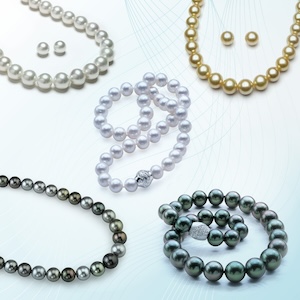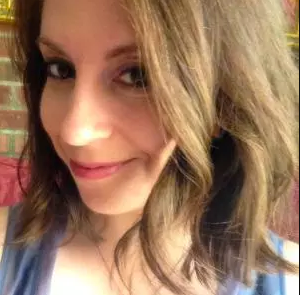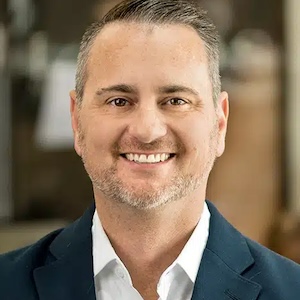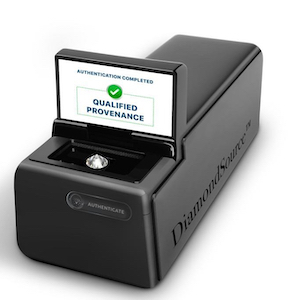
If Spacecode’s plans work out—and we qualify that statement with an “if”—here’s what importing diamonds will look like in 2024:
As the diamond importer moves through customs at JFK airport, an agent removes a handful of polished gems from his shipment for inspection. They are placed on Spacecode’s Diamond Source machine. It rates them “qualified”—which in this case means they weren’t mined from Russia. The importer is waved through, in a manner of minutes.
Sounds good, right? Antwerp World Diamond Centre (AWDC) thinks so. The Belgian industry group—which has traditionally opposed a ban on Russian diamonds—believes Spacecode will solve its Russian diamond dilemma. It had long argued that if the European Union banned Russian gems, they’d just head to Antwerp’s archrival Dubai, then to America. But if Russian goods can’t enter the United States, the playing field will be more even.
All of which explains why Spacecode’s plans for a diamond origin device have suddenly gained a high profile.
Current rules allow Russian-mined diamonds to enter the United States provided they were “substantially transformed” elsewhere. But at its upcoming meeting, the G7—which has signaled its desire to crack down on Russian-mined diamonds—is expected to require importers to declare their diamonds are not from Russia and back it up with some form of (still-undetermined) proof.
Antwerp has generally pushed for that type of requirement—but now argues it’s not enough. “We will not accept rubber-stamping solutions—like, for example, a system of declarations,” says AWDC spokesperson Tom Neys. “A science-based solution will deliver the strongest guarantee for a level playing field globally to enter the G7 markets.”
The problem is, a science-based solution to determining diamond origin has typically been considered either impossible or impractical. If Spacecode’s technology works, it would have huge implications. It could even render the Kimberley Process obsolete.
In an interview, Pavlo Protopapa, founder and CEO of Geneva-based Spacecode, discussed his new technology, why he thinks it’s promising but can’t guarantee that it will work, and when it might be available.
Can you tell us about your company and your technology?
Spacecode’s goal is the digitalization of the diamond supply chain. We currently are the global leaders in the automation of inventory management, using RFID—radio frequency identification. We have approximately 300 clients globally and track 25 million diamonds with our solution.
We have developed what we call Diamond Match, where we associate the diamond with its grading report to authenticate that the diamond being examined is in fact the diamond described in that grading report. We have 99.7% accuracy for matching a polished diamond to its grading report.
It was a natural progression to go from diamond identification and authentication to diamond origin, or what we call DiamondDNA. We looked at every type of technology to determine if we could actually fingerprint a rough diamond, then cut and polish that rough diamond and determine whether that fingerprint can survive, so that diamonds cut from that rough stone could be identified as coming from that original rough diamond. So once the source of the original rough diamond is known, we know the source of every diamond cut from that rough stone.
Right now, we’re working on two parallel tracks. The first track is being able to say, “This polished diamond comes from this piece of rough.” We think we have a noninvasive fingerprint that will persist through the life of a diamond and its polished progeny.
And what’s novel about our method is, if you fingerprint the rough diamond at the mine, then you can send it directly to the manufacturer. The manufacturer polishes the stone, and then with our machine they can match it to the rough. So you would have no need to send it to a lab and put it in sealed packets, which means delays and transport costs and the risk of loss.
The second track is what the G7 wants: If you have a polished diamond, can you put it on the device and tell where it originated without pre-fingerprinting?
We think that both problems are solvable, but it’s also dependent on Mother Nature giving us enough difference in the diamonds in the country from which they originated. In our developing efforts, we have seen that our method works. Now we have to significantly expand the testing effort to ensure the excellent results can be scaled to large volumes. Our goal is, by the end of 2023 we release a commercial device to the market and rapidly scale deployment of the devices worldwide.
To be clear, if I took a diamond from my house, could you tell me its origin?
We believe we will be able to do so. We have done it in limited numbers with excellent results. And now we have to confirm the method can be scaled to produce equally impressive results on a large scale. We have four professors—some of the best experts in the world—and a group of engineers and chemists working on this.
What specific aspects of the diamonds differentiate it?
In general terms, we look at optical properties, the chemical composition, and the morphology of a diamond. We have found that all diamonds are snowflakes. But in addition to being snowflakes, we found that they also come from certain “families.” And that led us to believe that those “families” come from different geographic regions.
How do you determine those families?
A diamond is made up of four principal elements: carbon, hydrogen, nitrogen, and boron. But after that, there is “other stuff,” what they call trace elements. And the “other stuff” has patterns. Our AI can group the data into families, and those families correspond to geographies.
There are three principal areas that diamonds come from today: Russia, Canada, and several countries in Africa. Our first goal was: Can we differentiate the continents? Then, can we differentiate the countries? Then, can we differentiate the mines? That’s what we’re working on now. We believe we can do all three.
How many diamonds have you tested?
Small numbers—under 1,000. So far we have found our method works, but we need to test more diamonds from every major region. But even when it’s launched, certain diamonds will no doubt register as undetermined origin, possibly because we have not yet “fingerprinted” diamonds from that region.
How many diamonds will you need to test before you’re confident this works?
Likely, 500 to 1,000 diamonds from each country that is mining diamonds. We will need the cooperation of the industry to make that happen quickly.
But it’s not 100% certain this will work.
If we were sure we had the answer, we would have made the machine yesterday. We want to have the machine ready by December 31. If nature is kind to us, we will see these patterns at scale.
Basically, in December one of three things will happen. The first is we will be on track to introduce our device. Second, we will fail, and we won’t be able to duplicate our initial data. Or it’s possible we’ll be on track, but we won’t be able to introduce our device until a bit later in 2024.
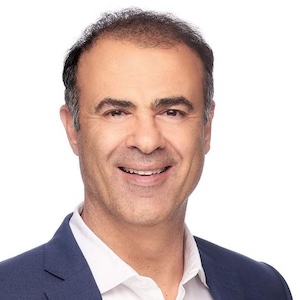
Even if you can’t narrow down a diamond’s origin to the mine, can you screen out Russia—which is what the G7 wants?
We are an independent, nonpolitical company. We have been pursuing this objective long before the war—which we hope will cease immediately. We have one goal: the digitalization of the diamond supply chain. We have always looked at origin from a positive perspective, as a way to drive up the value of diamonds. If the world wants to know the provenance of gold, watches, or leather, surely the origin of diamonds is also important.
If this device works, you can have customs agents set the parameters to differentiate between African, Russian, and Canadian diamonds. It is up to customers to determine the purpose of using our solution.
Have you done any independent testing on this?
When it is ready, we will invite everyone to test it.
So how confident this are you about this?
The data looks good. I’m betting my company on this, and we are putting a lot of money into it. Am I confident? Yes, that’s why I’m doing it. I am not one to waste my time or my money.
We have been working on this for years. We have been all over the world. We explored all sorts of methods. This approach, method, and apparatus is by far the most promising.
People are standing on the sidelines and saying this is impossible, but people have said things are impossible many times in history. Sometimes they guessed correctly, other times they were wrong.
[It’s like] I have jumped out of an airplane at 20,000 feet, believing we have a parachute that will deliver me safely to the ground and revolutionize the diamond industry. So I’m confident, and I’m nervous. But you know what? I’d rather dare to fail, then fail to try.
Everyone knows this is important. Instead of everyone standing on the sidelines and saying, “You can’t do it,” I would appreciate industry support. We welcome collaboration.
(Photos courtesy of Spacecode)
Follow JCK on Instagram: @jckmagazineFollow JCK on Twitter: @jckmagazine
Follow JCK on Facebook: @jckmagazine

